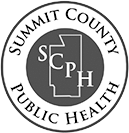COMMON STDs
This is a partial listing of common STDs. For more information on STDs, please visit this CDC site.
Bacterial Vaginosis is the name of a condition in women where the normal balance of bacteria in the vagina is disrupted and replaced by an overgrowth of certain bacteria. It is sometimes accompanied by discharge, odor, pain, itching, or burning. More...
Chlamydia is a common sexually transmitted disease (STD) caused by the bacterium, Chlamydia trachomatis, which can damage a woman's reproductive organs. Even though symptoms of chlamydia are usually mild or absent, serious complications that cause irreversible damage, including infertility, can occur "silently" before a woman ever recognizes a problem. Chlamydia also can cause discharge from the penis of an infected man. More...
Gonorrhea is a sexually transmitted disease (STD) caused by Neisseria gonorrhoeae, a bacterium that can grow and multiply easily in the warm, moist areas of the reproductive tract, including the cervix (opening to the womb), uterus (womb), and fallopian tubes (egg canals) in women, and in the urethra (urine canal) in women and men. The bacterium can also grow in the mouth, throat, eyes, and anus. More...
Genital Herpes is a sexually transmitted disease (STD) caused by the herpes simplex viruses type 1 (HSV-1) or type 2 (HSV-2). Most genital herpes is caused by HSV-2. Most individuals have no or only minimal signs or symptoms from HSV-1 or HSV-2 infection. When signs do occur, they typically appear as one or more blisters on or around the genitals or rectum. The blisters break, leaving tender ulcers (sores) that may take two to four weeks to heal the first time they occur. Typically, another outbreak can appear weeks or months after the first, but it almost always is less severe and shorter than the first outbreak. Although the infection can stay in the body indefinitely, the number of outbreaks tends to decrease over a period of years. More...
Human Immunodeficiency Virus (HIV) is the virus that can lead to AIDS (Acquired Immune Deficiency Syndrome). A great deal of information is available on the CDC web site. Click here to visit the site.
Human Papillomavirus (HPV) is the most common sexually transmitted disease (STD). There are more than 40 HPV types that can infect the genital areas of males and females. These HPV types can also infect the mouth and throat. Most people who become infected with HPV do not even know they have it. HPV is not the same as herpes or HIV (the virus that causes AIDS). These are all viruses that can be passed on during sex, but they cause different symptoms and health problems. More...
Pelvic Inflammatory Disease (PID) refers to infection of the uterus (womb), fallopian tubes (tubes that carry eggs from the ovaries to the uterus) and other reproductive organs that causes symptoms such as lower abdominal pain. It is a serious complication of some sexually transmitted diseases (STDs), especially chlamydia and gonorrhea. PID can damage the fallopian tubes and tissues in and near the uterus and ovaries. PID can lead to serious consequences including infertility, ectopic pregnancy (a pregnancy in the fallopian tube or elsewhere outside of the womb), abscess formation, and chronic pelvic pain. More...
Syphilis is a sexually transmitted disease (STD) caused by the bacterium Treponema pallidum. It has often been called "the great imitator" because so many of the signs and symptoms are indistinguishable from those of other diseases. More...
Trichomoniasis is a common sexually transmitted disease (STD) that affects both women and men, although symptoms are more common in women. More...
page updated 06-26-2025
